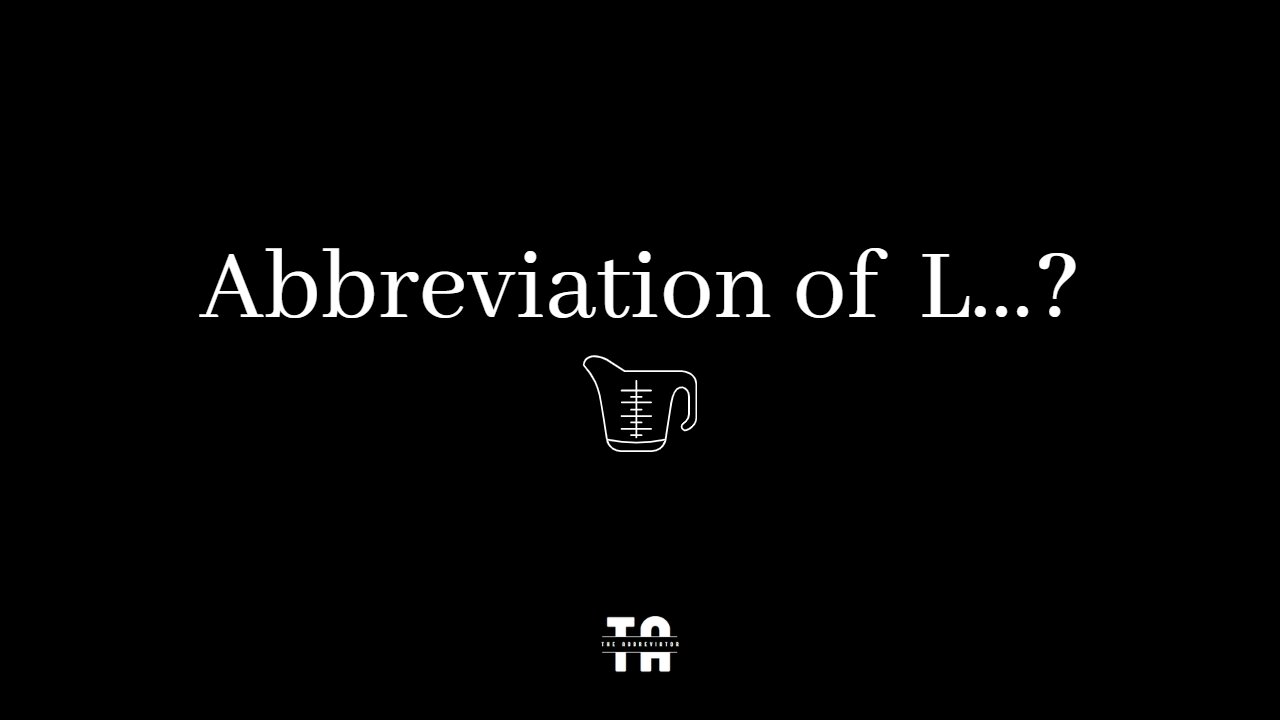Premium Only Content

Abbreviation of L? | Unit of Measurements.
Abbreviation of L. (Liter)
" L." is a shortened version of the word " Liter,". The liter is a metric unit of volume commonly used to measure liquid capacity. It is part of the International System of Units (SI) and is widely adopted around the world. The liter is equal to one cubic decimeter (1 L = 1 dm³) or 1000 cubic centimeters (1 L = 1000 cm³).
The term "liter" is derived from the French word "litre," which was introduced by the French government in 1795 as part of the metric system. It was originally intended to be a unit of volume equal to the volume of one kilogram of water at its maximum density.
The liter is a convenient unit for measuring the volume of liquids such as water, milk, gasoline, and other beverages or substances. It is used in everyday life for various purposes, including in cooking, manufacturing, scientific research, and commercial transactions.
The liter is based on the decimal system, which makes conversions between different metric units of volume straightforward. For example, 1 liter is equal to 1000 milliliters (mL) or 0.001 cubic meters (m³). It is also equivalent to approximately 33.814 fluid ounces in the United States customary system of measurement.
It's worth noting that the liter is a unit of volume, not weight. The weight of a substance in liters can vary depending on its density. For example, a liter of water will weigh approximately 1 kilogram, but a liter of a denser substance like oil or mercury will weigh more.
In some countries, the liter is sometimes referred to as a "litre" with an additional "re" at the end, especially in British English. However, the abbreviation "L" remains the same regardless of the spelling.
To give you an idea of the volume represented by a liter, it is roughly equivalent to a cube with sides measuring about 10 centimeters (or 4 inches) in length. It is also comparable to the volume of a standard water bottle.
The liter is widely adopted as a unit of measurement around the world, particularly in countries that have adopted the metric system. It is used in various industries, including scientific research, engineering, medicine, and commerce.
The liter is a useful unit for conversions between different metric units of volume. For example, 1 liter is equal to 1000 milliliters, 0.001 kiloliters, or 0.001 cubic meters. In many countries, fuel efficiency for vehicles is measured in liters per 100 kilometers (L/100 km). This measurement represents the number of liters of fuel consumed for every 100 kilometers traveled.
Music: https://www.chosic.com/free-music/all/
-
 LIVE
LIVE
Badlands Media
10 hours agoDEFCON ZERQ Ep. 011: RED OCTOBER BEGINS - ARK OF COVENANT - PRECIPICE
22,254 watching -
 2:08:09
2:08:09
The Charlie Kirk Show
4 hours agoTPUSA Presents This is The Turning Point Tour LIVE with Alex Clark and more!!
74.6K65 -
 1:33:53
1:33:53
Inverted World Live
4 hours agoMan Sees Creature in Loch Ness | Ep. 116
26K3 -
 LIVE
LIVE
PandaSub2000
13 hours agoLIVE 10pm ET | EXORCIST LEGION VR (Horror In VR!)
116 watching -
 LIVE
LIVE
SmashJT
1 hour agoCollective Shout Keeps “HARRASSING” Me | Smashcast
158 watching -
 LIVE
LIVE
StevieTLIVE
2 hours agoWarzone Wins ALL Night w/ GloryJean
69 watching -
 3:22:50
3:22:50
Laura Loomer
5 hours agoEP146: Loomer EXPOSES Big Tech's Complicity With Anti-ICE Violence
28.6K9 -
 31:39
31:39
Standpoint with Gabe Groisman
1 day ago“Most People Have NO IDEA What Isolationism could do to America” Rep Rich McCormick Joins Standpoint
9.92K2 -
 LIVE
LIVE
MissesMaam
4 hours ago75% DONE WITH PERFECTION!!! | Stardew Co-Op 💚✨
123 watching -
 LIVE
LIVE
Clenzd Gaming
3 hours ago $0.32 earnedThe Return
63 watching